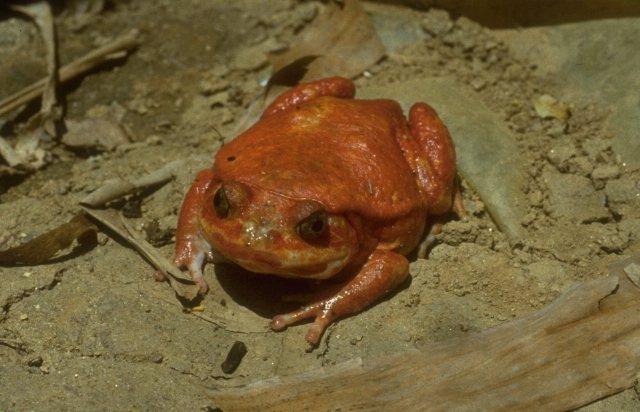Scientific Name: Dyscophus antongilii
Species Authority: Grandidier, 1877
Common Names: Madagascar Tomato Frog, Madagascan Tomato Frog, Tomato Frog
Synonyms:
Dyscophus insularis var. antongilii Grandidier, 1877
Dyscophus insularis var. pallidus Grandidier, 1877
Dyscophus sanguineus Boettger, 1880 |

